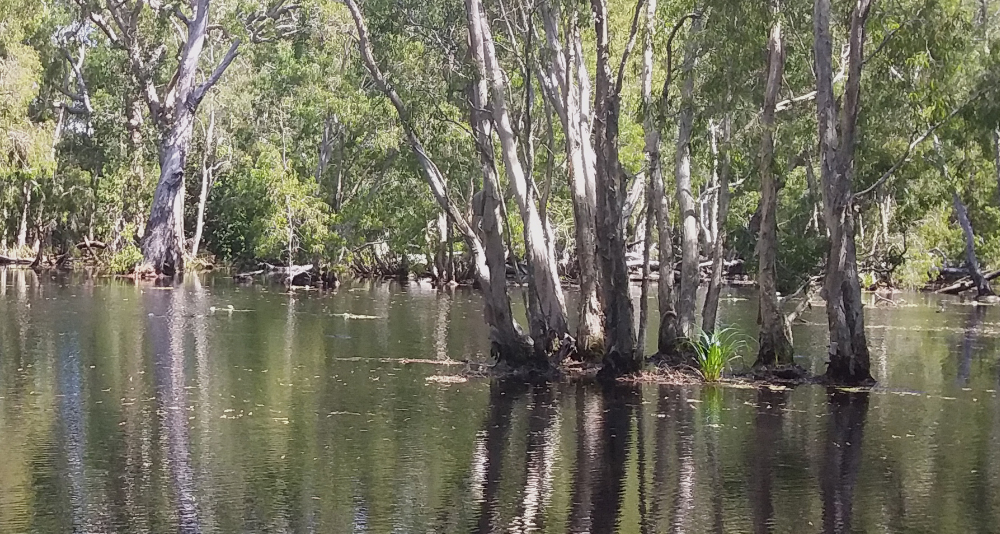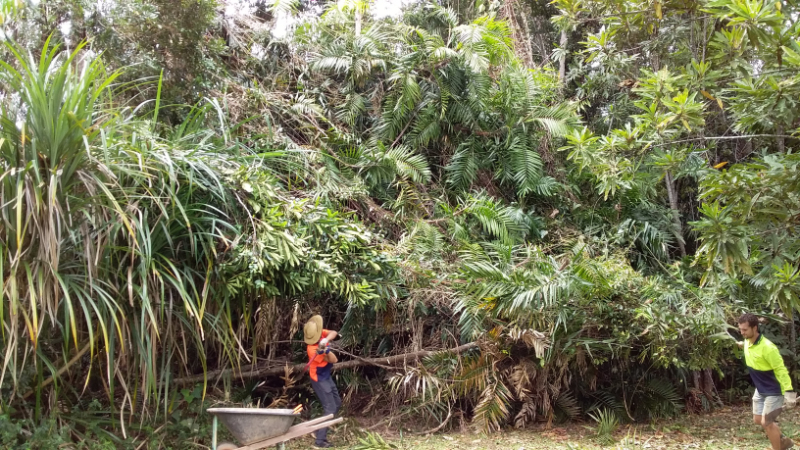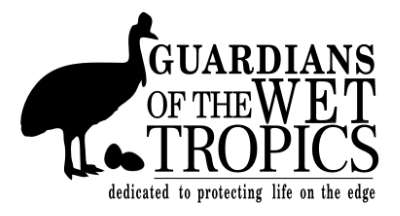
Building healthy strong communities
“The need to develop a comprehensive understanding of the role that protected areas play in the lives of communities is arguably as important as developing a greater understanding of the scientific aspects of the area” WTMA Community Survey 2008

Guardian’s working together to help neighbours after fallen trees and vines block the driveway after a storm.
Life on the edge- approx. 350,000 people live within fifty kilometres of the World Heritage boundary. Successful strategies to facilitate enhanced connectedness, active engagement, and partnership among members of the community, community groups and organisations greatly strengthens the opportunity to achieve social, economic, and environmental objectives.
From a regional perspective, enhancing environmental awareness, knowledge and the protection of rainforest plants and animals are considered the most important community benefits.
We plan to work in this space to create a program “Guardians of the Wet Tropics”. This involves us listening and learning from the community as much as educating the community about these environmental challenges.
The Wet Tropics Management Authority (WTMA) Community Survey 2008 – commissioned ongoing community attitude surveys recognising the need for and the advantages of broad community engagement. Acknowledging the need to build and maintain close relationships with communities that are located within the vicinity of the Wet Tropics.
We reference the WTMA Community Survey to address the extinction crisis facing us.
McIntyre-Tamwoy (2004, p. 290), who observed that “local communities often have a deep sense of ownership of ‘parks’ and some have a deep sense of attachment to particular places within the landscape or to practices that they see as intimately linked to their sense of identity”.
The significance of this engagement was noted by Millar (2006, p. 50) who commented that “as committed stakeholders, local people combine an understanding and appreciation of the heritage assets and willingness to communicate this sensibility and knowledge to others.”
Murphy and Murphy (2004) observed that it is the residents who are aware of the environmental resources and attractions in their local community and who will be among the first to detect environmental stress and damage. This supports the case for continuing to find ways to actively engage with the community through consultation processes and communication strategies.
The strongest concern expressed in the survey related to the standard of feral pest management and the management of human activities both within and outside the Area boundaries. Feral animals and plants were still considered the most serious threat to the WTQWHA 63.0% of the respondents indicated they had little opportunity to make a meaningful contribution.
In the near future, it is likely that continuing urban growth will create conflicts between development and protection. Given the high level of support that is clearly present for the continued protection of the WTQWHA, there is strong evidence to suggest that the community will continue to support policy that places protection of natural areas above their development for other uses.
Understanding the social, natural, and cultural values of a protected area held by community members involves learning from the community as well as educating the community about these environmental values. The need to develop a comprehensive understanding of the role that protected areas play in the lives of communities is arguably as important as developing a greater understanding of the scientific aspects of the area. This attachment is not always based on an appreciation of scientific value or resource use.
Through Guardians active engagement with the community, we grow awareness of and willingness to address the threats facing our environment and endangered flora and fauna species.
By identify neighbours across the Wet Tropics who are doing best practise or even experimenting with innovated ideas, we network these individuals with community members who are interested but may lack knowledge, resources, or skill. Through developing these social relationships ongoing friendships are made, a collective sense of appreciation is created and a willingness to learn. People say they feel an important part of the community that cares. This fosters a shared sense of responsibility, to enhance and protect their patch and understand their environments unique qualities better.
We propose that communities just need support, increased knowledge on how they can help and connections so cooperation can begin. Through our Guardians project linking communities to each other and Government agencies we achieve positive outcomes to mitigate some of the challenges of the Wet Tropics extinction crisis and network communities to be stronger in the climate change challenges that face us.
